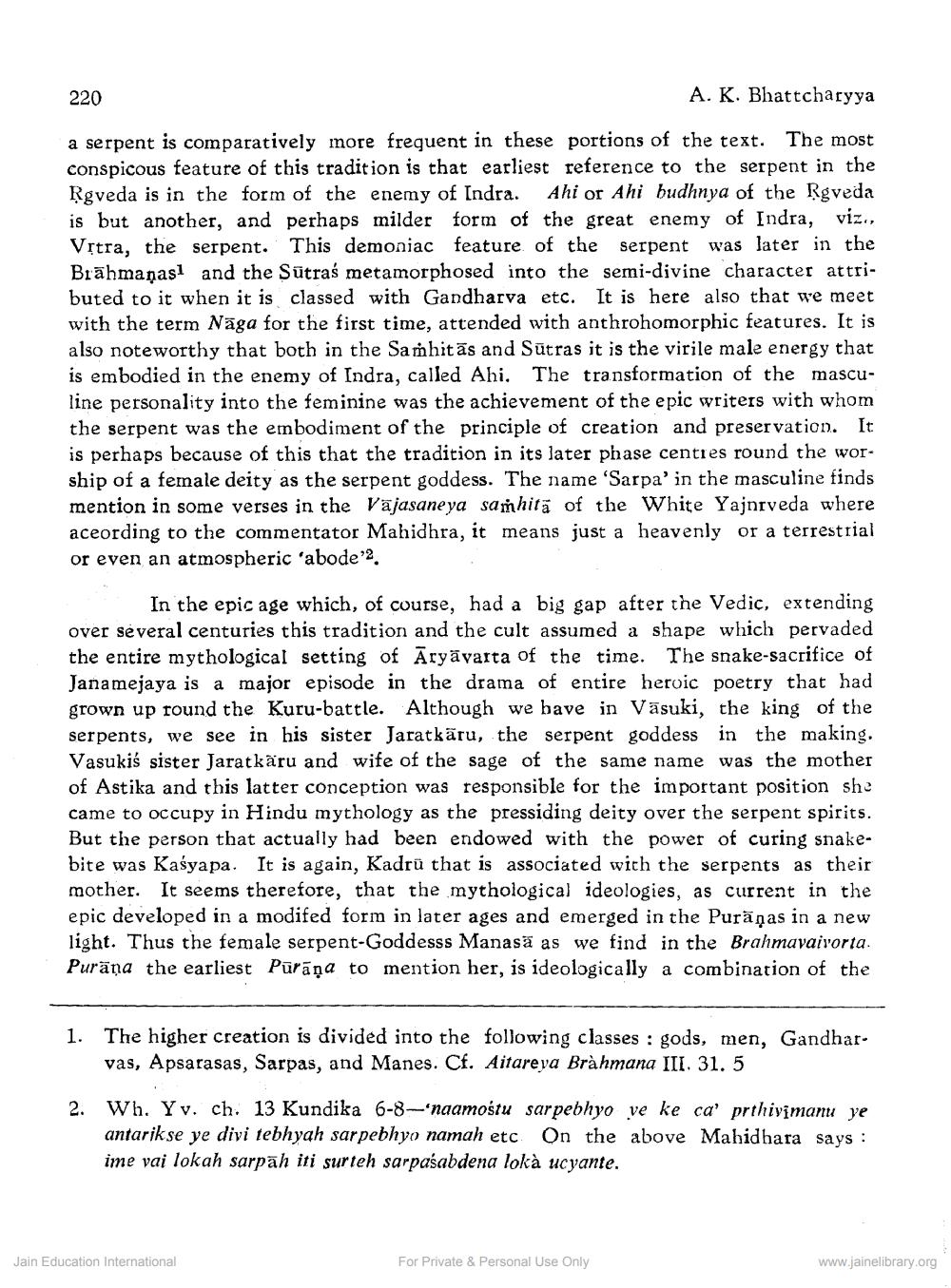________________
220
A. K. Bhattcharyya
a serpent is comparatively more frequent in these portions of the text. The most conspicous feature of this tradition is that earliest reference to the serpent in the Rgveda is in the form of the enemy of Indra. Ahi or Ahi budhnya of the Rgveda is but another, and perhaps milder form of the great enemy of Indra, viz., Vitra, the serpent. This demoniac feature of the serpent was later in the Brāhmaṇasl and the Sūtras metamorphosed into the semi-divine character attributed to it when it is classed with Gandharva etc. It is here also that we meet with the term Nāga for the first time, attended with anthrohomorphic features. It is also noteworthy that both in the Saṁhitās and Sūtras it is the virile male energy that is embodied in the enemy of Indra, called Ahi. The transformation of the masculine personality into the feminine was the achievement of the epic writers with whom the serpent was the embodiment of the principle of creation and preservation. It is perhaps because of this that the tradition in its later phase centres round the worship of a female deity as the serpent goddess. The name 'Sarpa' in the masculine finds mention in some verses in the Vajasaneya samhita of the White Yajnrveda where aceording to the commentator Mahidhra, it means just a heavenly or a terrestrial or even an atmospheric 'abode'2.
In the epic age which, of course, had a big gap after the Vedic, extending over several centuries this tradition and the cult assumed a shape which pervaded the entire mythological setting of Āryävarta of the time. The snake-sacrifice of Janamejaya is a major episode in the drama of entire heroic poetry that had grown up round the Kuru-battle. Although we have in Vāsuki, the king of the serpents, we see in his sister Jaratkāru, the serpent goddess in the making, Vasukiś sister Jaratkäru and wife of the sage of the same name was the mother of Astika and this latter conception was responsible for the important position she came to occupy in Hindu mythology as the pressiding deity over the serpent spirits. But the person that actually had been endowed with the power of curing snakebite was Kaśyapa. It is again, Kadrū that is associated with the serpents as their mother. It seems therefore, that the mythological ideologies, as current in the epic developed in a modifed form in later ages and emerged in the Purāņas in a new light. Thus the female serpent-Goddesss Manasā as we find in the Brahmavaivorta. Purāņa the earliest Pūrāņa to mention her, is ideologically a combination of the
1. The higher creation is divided into the following classes : gods, men, Gandhar.
vas, Apsarasas, Sarpas, and Manes. Cf. Aitareva Brahmana III. 31.5
2. Wh. Yv. ch. 13 Kundika 6-8--naamostu sarpebhyo ve ke ca' prthivimanu ye
antarik se ye divi tebhyah sarpebhyo namah etc On the above Mahidhara says: ime vai lokah sarpāh iti surteh sarpaśabdena loka ucyante.
Jain Education International
For Private & Personal Use Only
www.jainelibrary.org




